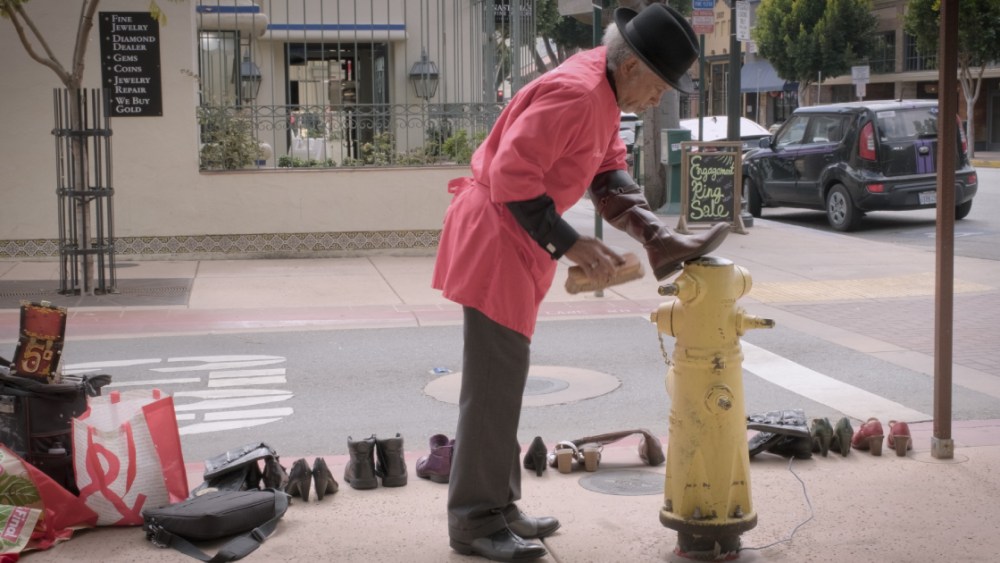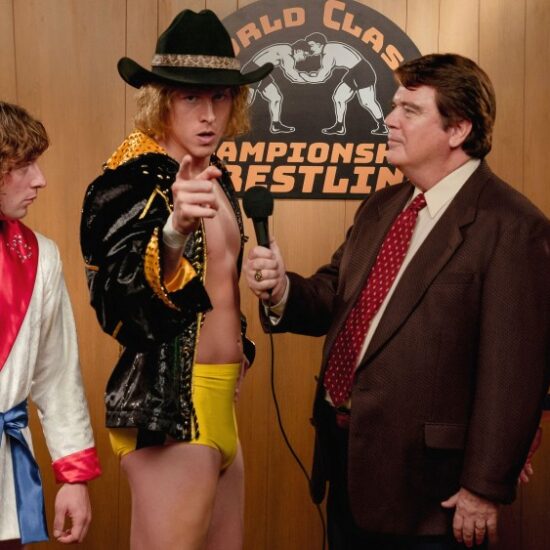
When first-time documentary director Leonard Manzella premieres his award-winning “Shoe Shine Caddie” at the Portobello Film Festival in London on September 16, it will represent a kind of return to the former actor’s roots in the international film scene.
A professional family therapist for the past 30 years in California, Manzella’s earlier career began when the native Angeleno left Los Angeles for Rome in 1968 “when everything was burning.” In his early 20s and armed with “no contacts and about $50 bucks in my pocket,” a fortuitous introduction to American actor Brett Halsey got Manzella into movies, first as an extra and eventually as a leading man.
Halsey, who landed in Rome in the ‘60s and worked steadily in Euro crime thrillers and in the burgeoning spaghetti western scene, often toiled under the moniker Montgomery Ford and Leonard Manzella became famous as Leonard Mann.
Courtesy Leonard Manzella
“I went to Rome to study political science, but a friend in L.A. told me to call Halsey, and through him I got my first job in film, working ten days as an extra. On my first movie, ‘Youth March,’ there was a young cinematographer named Vittorio Storaro and we were both coming up,” recalls Manzella. “This was 10 years before he started winning Oscars!”
In his early days in Rome, Manzella also met most of the legendary Italian auteurs of the era, including Pier Paolo Pasolini, Luchino Visconti and Vittorio De Sica, whose early Italian neo-realist masterpiece “Umberto D” would prove to have a decisive influence on Manzella.
During his time on the continent, Manzella found himself starring opposite such leading Euro stars as Laura Antonelli and Marcello Mastroianni (in the torrid 1977 romantic drama “Wifemistress”) and alongside cult film legend Klaus Kinski in “Vengeance is a Dish Served Cold,” which is cited as a major influence on another Italian-American filmmaker, Quentin Tarantino.
Manzella became disenchanted with the film business in Europe, which he recalls faced tremendous economic challenges created by one of Italy’s regular changes in governments.
“They switched from the far left to the far right and the taxes suddenly cratered Italian cinema. It wiped out the major producers like Carlo Ponti and Dino De Laurentiis.”
Thus, Manzella returned to Southern California where he acted in the hit TV show “Charlie’s Angels,” and starred in routine thrillers such as “Night School” and with Harvey Keitel in “Order of Death.”
One great creative partnership did blossom out of that rough patch when Manzella eventually switched gears in the ’80s and became a practicing family therapist, the field that he and his fellow family therapist wife, Lynne, have pursued in the San Luis Obispo area for three decades.
“I became friends with director Monte Hellman, who was living in a house in Malibu that was owned by my brother Ray. Monte was really the spiritual heir of those European directors I admired. Where De Sica made a narrative film, ‘Umberto D,’ that looked and felt like a documentary, Monte was inspired by the Italian neo-realists like De Sica and Ermanno Olmi.”
Manzella missed the chance to work with Hellman early on, as he was committed to work on a Pirandello play in Sicily in 1978 when Hellman made his one, rather late, spaghetti western “China 9, Liberty 37” with Italian star Fabio Testi in Spain and Rome.
But Hellman and Manzella became friends and filmmaking collaborators, with Manzella popping up in Hellman’s 1989 horror thriller, “Silent Night, Deadly Night 3: Better Watch Out,” and they toiled on several screenplays together that to date haven’t found their way onto the screen.
Their friendship and partnership included constant filmgoing and constant conversations about films and filming.
“Monte took me to some screenings of his films ‘The Shooting’ and ‘Ride in the Whirlwind’ and just like with De Sica, I was mesmerized by his movies. They were so simple and to the point. He was forcing me to see things that normally I wouldn’t take time to look at. There’s a dinner scene in ‘Ride,’ where no one talks, and it made me nervous. It reminded me of my family!”
For Manzella, show business in L.A. in the ‘80s didn’t have the magic lure of Rome in the ‘60s. “In Rome, it was about living, about women, about books and politics, and everything great about being young and committed to art. In L.A., everything was just the next fucking deal.” That dissatisfaction with the industry led to family counseling.
Living in Central California, Manzella and Hellman, still in L.A., remained close and Manzella came close to production on a film version of his play “Cages,” which was borne out of his psychodrama therapy work with death row inmates in the California penal system.
Then Hellman, at the age of 91, passed away in 2021.

Courtesy Leonard Manzella
“’Shoe Shine Caddie’ happened because of something Monte Hellman used to say: ‘If it moves you, it will move the audience.’ So ‘Shoe Shine Caddie’ came out of my curiosity about Adrian Spears, a man I saw shining shoes for the lawyers in front of the San Luis Obispo County Courthouse. I saw him from 100 feet away, wearing a bright red apron, a starched shirt, and he was often dancing, wearing a bowler hat. I wondered, ‘Who the eff is that?’ and I had my shoes shined. I didn’t know he was homeless. San Luis is such a Wonder Bread town, so he really stood out.”
Manzella convinced Spears to tell his story on film. Spears was homeless and kept his immaculate clothes in a storage unit out of town. He was trying to gain shared custody of a young daughter he had fathered in a casual relationship.
“From the beginning, Adrian was a trooper” recalls Manzella. “I told him ‘I’m going to have my head up your ass’ and he understood what was involved, but he thought the film might help his cause by giving him some local exposure. And he just thought I was some old fart who thought he was Spielberg. He figured I was full of baloney, but why not give it a try.”
Manzella the filmmaker encountered challenges as Spears struggled in both his custody fight, which (spoiler alert) he ultimately lost, and with his lifelong battles with alcohol abuse, which as is well known, is a day-at-a-time fight.
“Adrian would fall off the rails and drink, but he would always come back. You see this, and you want to put the camera on your subject and let life happen and you don’t want to get in the way, but you want to get in the way. It wasn’t easy for the therapist in me, but I knew in my heart I had to stay out of that role and just be an observer.”
The result of their many months of candid interviews and quiet, insightful observation is a small gem that premiered in the San Luis Obispo Film Festival and won first prize for Best Central California film, which in essence was an audience award.

Courtesy Leonard Manzella
This led to a three-week run at the town’s arthouse, the Palm Theater, and all proceeds were donated to the 40 Prado Road homeless shelter. It also placed in the Top Ten Best Films at the recent Maine International Film Festival and will play again this November in Waterville, Maine as a fundraiser, this time for a local Maine homeless shelter.
As for Adrian Spears and the daughter he fought so hard to have in his life, the hard-working Spears no longer lives on the streets and now resides in what Manzella describes as a “very nice” publicly-assisted apartment. And Manzella happily reports “the family who adopted his daughter has let Adrian remain in her life. He came to understand what was best for her, but he begged them, ‘Please don’t cut her out of my life.’ This film has made me see the issue of homelessness in a completely different way, but I think the real impact may be this: Someday this little girl will grow up and there will be a film for her to see and learn about who her father was and how much he loved her and how hard to fought to stay in her life.”












